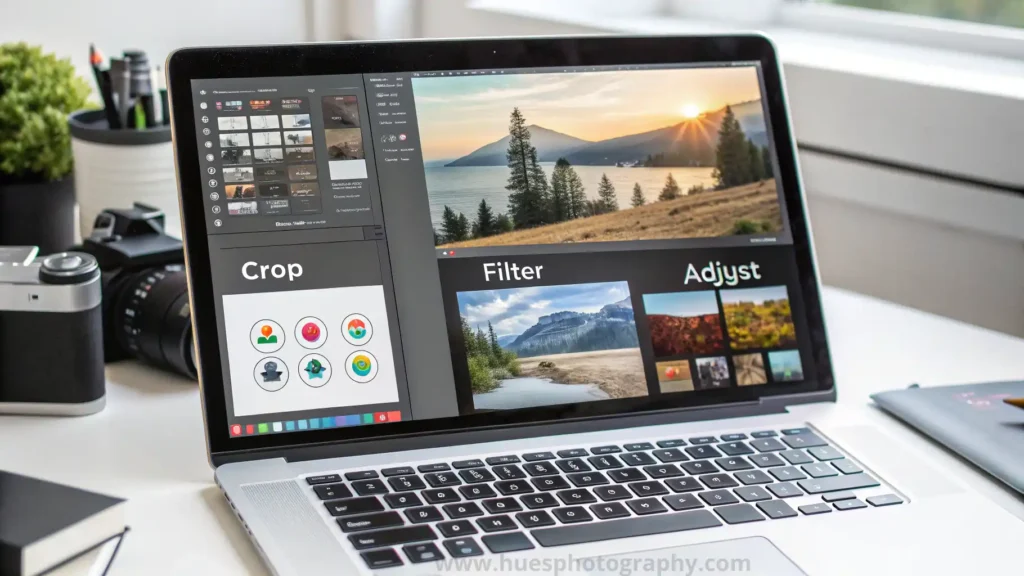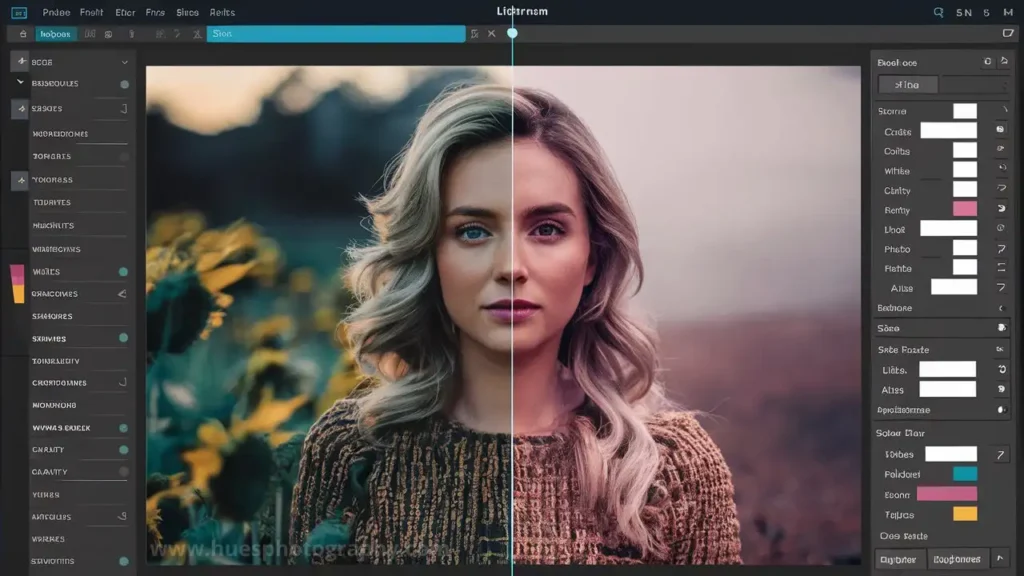In the digital age, photo editing has become a crucial skill for everyone from professional photographers to social media enthusiasts. Whether touching up photos for a project or creating visually appealing images for social media, the right photo editing software can make a significant difference. But what if you’re not ready to invest in paid tools like Photoshop? Thankfully, plenty of free photo editing software can offer powerful features without breaking the bank.
In this article, we’ll walk you through the best free photo editing software in 2024, breaking down their strengths, weaknesses, and what type of user they’re best suited for.
Key Features to Consider in Free Photo Editing Software
Before we jump into the top free tools, it’s essential to understand what features to look for in a photo editor. While paid software typically offers an all-in-one package, free software can vary significantly in terms of functionality. Here’s a breakdown of key features to consider:
User-Friendly Interface
A simple and intuitive interface makes the editing process smoother, especially for beginners. The layout of tools, customization options, and ease of navigation all matter.
Essential Editing Tools
Every good photo editor should offer the basics: cropping, resizing, rotating, and adjusting exposure, contrast, and saturation. Additionally, advanced features like layers, masks, and filters are a bonus.
Support for Different File Formats
The ability to import and edit various file formats is crucial for professional or hobbyist photographers working with RAW images. Check if the software supports formats like PNG, JPEG, TIFF, and RAW files.
Customizable Features and Plugins
Some photo editors allow you to enhance functionality through plugins or extensions, giving you more creative control. The availability of brushes, filters, and customizable layers can help with more advanced projects.
Export Quality
Finally, look for software that allows you to export high-quality images. You don’t want to put in hours of work only to have the final image look pixelated or grainy.
Top Free Photo Editing Software in 2024
There are plenty of free photo editing tools out there, but which ones are worth your time? Below, we’ve compiled a list of the best free photo editing software in 2024, based on features, ease of use, and overall performance.
1. GIMP (GNU Image Manipulation Program)
GIMP has long been considered the best free alternative to Photoshop, especially for those who need advanced editing capabilities. With its wide array of tools, GIMP is ideal for everything from basic edits to intricate graphic design tasks.
Key Features
- Supports layers and masks
- Advanced image manipulation and retouching tools
- Open-source and customizable with plugins
Advantages
- Powerful, comparable to paid software
- Regular updates and a large community
- Cross-platform (available on Windows, macOS, and Linux)
Limitations
- The steep learning curve for beginners
- Interface can feel outdated
Best for: Advanced users and professionals who want a free Photoshop alternative.
2. Paint.NET
Originally developed as a replacement for Microsoft Paint, Paint.NET has evolved into a powerful editing tool with a clean, user-friendly interface. It offers a wide range of essential features, without overwhelming the user.
Key Features
- Easy-to-use layers and filters
- Selection of drawing tools
- Active online community with plugins and tutorials
Advantages
- Fast performance, lightweight
- Simple, intuitive interface
Limitations
- Lacks advanced features for professional editing
- Only available for Windows
Best for: Intermediate users who need quick edits with a straightforward interface.
3. Darktable
Darktable is the go-to choice for photographers looking for an alternative to Adobe Lightroom. It specializes in RAW image editing and photo management, making it ideal for those who work with high-quality images.
Key Features
- Non-destructive RAW editing
- Advanced color correction tools
- Extensive library management features
Advantages
- Ideal for managing and editing extensive photo libraries
- Open-source and free
Limitations
- The interface is a bit complex for beginners
- Primarily focused on RAW files
Best for Photographers handling RAW files who need Lightroom-like features without the cost.
4. Pixlr
If you’re looking for a web-based solution that doesn’t require downloading software, Pixlr is a fantastic option. It offers two versions: Pixlr X for beginners and Pixlr E for more advanced users.
Key Features
- Web-based, no downloads needed
- Basic and advanced editing options
- Supports multiple file formats
Advantages
- Accessible anywhere with an internet connection
- Offers a variety of filters, overlays, and effects
Limitations
- Ads in the free version
- Limited features compared to desktop software
Best for: Quick, web-based edits without the need to download software.
5. PhotoScape X
PhotoScape X is a versatile photo editing suite that packs in tons of features. From photo filters and effects to GIF creation, this software covers a lot of ground, making it ideal for beginners.
Key Features
- All-in-one editing tools
- GIF creation and batch editing
- Filters, effects, and basic adjustments
Advantages
- User-friendly, great for beginners
- Available for both Windows and macOS
Limitations
- Lacks the advanced tools found in professional software
Best for: Beginners who want an easy-to-use suite of tools for basic edits.
6. Canva
Canva isn’t just a photo editor—it’s also a graphic design platform. While it’s more focused on creating social media graphics, presentations, and marketing materials, Canva offers a robust set of tools for editing photos too.
Key Features
- Drag-and-drop interface
- Thousands of templates and design elements
- Built-in photo editing tools
Advantages
- Easy to use, perfect for non-designers
- Web-based, accessible from any device
Limitations
- Limited customization compared to full-featured photo editors
- The free version includes watermarks on some features
Best for: Social media and graphic design enthusiasts.
7. Inkscape
Inkscape is a vector-based design tool, similar to Adobe Illustrator, but it also has powerful photo editing capabilities. It’s particularly useful for those who need to work with both raster and vector images.
Key Features
- Vector editing with support for raster images
- Extensive filters and path effects
- Open-source and highly customizable
Advantages
- Ideal for creating scalable graphics
- Strong community support
Limitations
- Not as user-friendly as other tools
- Can feel slow with large files
Best for: Vector-based editing and graphic design.
Mobile-Friendly Free Photo Editing Apps

If you’re looking to edit photos on the go, there are several excellent mobile apps available. Some top picks include:
- Snapseed: A comprehensive app with powerful editing tools.
- Adobe Photoshop Express: A simplified version of Photoshop for mobile users.
- VSCO: Known for its filters and user-friendly interface.
How Free Tools Compare to Paid Software

Feature Set
Paid software like Adobe Photoshop or Lightroom generally offers a more extensive range of tools and features compared to free alternatives. Advanced features such as 3D modeling, in-depth typography tools, and AI-powered editing (like content-aware fill-in Photoshop) are often exclusive to paid versions. Free software may have similar functions but often lacks the depth and refinement seen in premium tools.
Ease of Use
Paid software typically focuses more on user experience, offering intuitive and polished interfaces. Programs like Photoshop and Lightroom are designed for professional workflows, making them smoother for large projects. Free software, such as GIMP or Darktable, can be just as powerful but may require more time to learn due to less streamlined interfaces or fewer user-friendly features.
Customization and Plugins
Many free tools like GIMP and Inkscape support community-created plugins and extensions, allowing users to add more functions at no extra cost. However, paid software like Photoshop has larger, professionally developed plugin libraries that integrate more seamlessly into the workflow, offering more polished and sophisticated enhancements.
Performance and Stability
Paid software is often optimized for better performance, especially when handling large files or complex projects. Programs like Adobe Photoshop and Affinity Photo are built for efficiency, reducing the likelihood of crashes or lag, particularly on high-end machines. Free software, while capable, may not always handle resource-intensive tasks as smoothly, especially on older or less powerful computers.
Customer Support and Resources
One key advantage of paid software is access to official customer support, detailed documentation, and tutorials from the developers. Adobe, for instance, offers 24/7 support, extensive tutorials, and a massive library of learning resources. Free tools typically rely on community-driven support, which can be helpful but less reliable or consistent, particularly when troubleshooting complex issues.
Maximizing Your Experience with Free Photo Editing Software

To make the most of free editing tools:
- Familiarize Yourself with Keyboard Shortcuts
Mastering keyboard shortcuts can greatly enhance your workflow efficiency. Most editing software, like GIMP or Paint.NET, allows you to customize shortcuts, so you can set them up to fit your editing style.
- Experiment with Layers and Masks
Many free photo editors, such as GIMP, allow you to use layers and masks, which are essential for non-destructive editing. Play around with these features to add depth and make detailed adjustments without altering the original image.
- Use Plugins and Extensions
Some tools, like GIMP and Paint.NET, support plugins that can extend functionality. Explore plugin libraries for additional brushes, filters, or effects to expand your creative possibilities.
- Watch YouTube Tutorials and Take Online Courses
There are countless free tutorials on YouTube and websites like Udemy or Skillshare. Watching experienced users walk through editing techniques can help you learn advanced features more quickly.
- Work in High Resolution
When editing photos, always work with the highest resolution possible to retain quality, especially if you plan to print or enlarge the image later. Avoid compressing the image too much during export.
Conclusion
Free photo editing software has come a long way, offering a range of features suitable for everyone from beginners to seasoned professionals. Whether you need a simple tool for quick edits or a more advanced program for complex projects, there’s something out there for you. By exploring the options in this list, you’ll find the best tool to meet your creative needs—without spending a dime.
FAQs
1. Which free photo editing software is most suitable for beginners?
- PhotoScape X and Canva are excellent options due to their user-friendly interfaces and variety of tools.
2. Are free photo editing tools safe to use?
- Yes, but make sure to download from official websites to avoid malware.
3. Can I achieve professional results with free software?
- Yes, software like GIMP and Darktable offers professional-level features that can compete with paid tools.
4. Do free photo editors support RAW file formats?
- Programs like Darktable and GIMP support RAW file editing.
5. How do online photo editors compare to desktop versions?
- Online editors like Pixlr are convenient but may lack the depth and power of desktop versions like GIMP.
6. Which free photo editing software is best for social media content?
- Canva is highly recommended for creating social media graphics. It offers pre-designed templates and tools tailored for platforms like Instagram, Facebook, and Pinterest.
7. Can I use free photo editing software for professional photography?
- Yes, tools like GIMP and Darktable are equipped with advanced features suitable for professional-level editing, especially if you work with RAW files or need detailed photo manipulation.
8. Is free photo editing software available for Mac users?
- Yes, many free photo editing programs, such as GIMP, Darktable, and PhotoScape X, are compatible with macOS.
9. Do free photo editors have watermarks on exported images?
- Most free desktop photo editors like GIMP, Darktable, and Paint.NET do not impose watermarks. However, some web-based editors, like the free version of Canva, may add watermarks to certain elements.
10. Can I edit videos with free photo editing software?
- No, most free photo editors focus solely on image editing. However, if you’re looking to edit videos, you can try free video editing tools like DaVinci Resolve or OpenShot.


